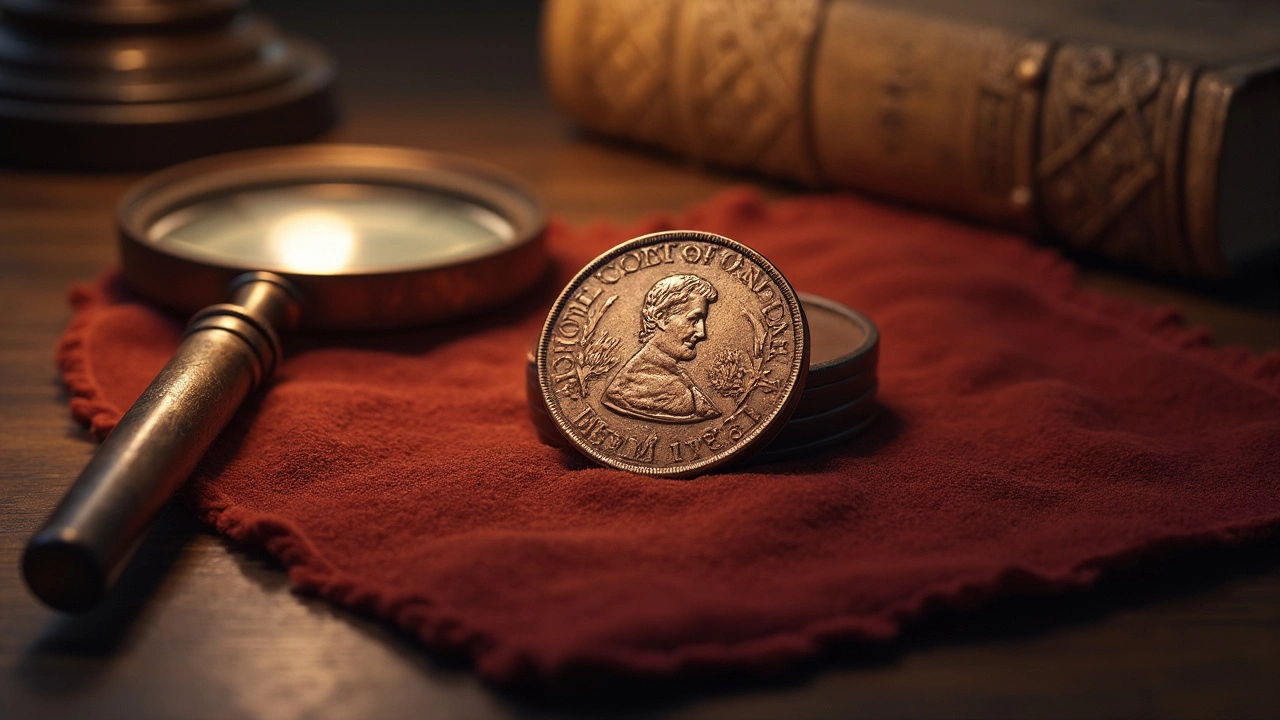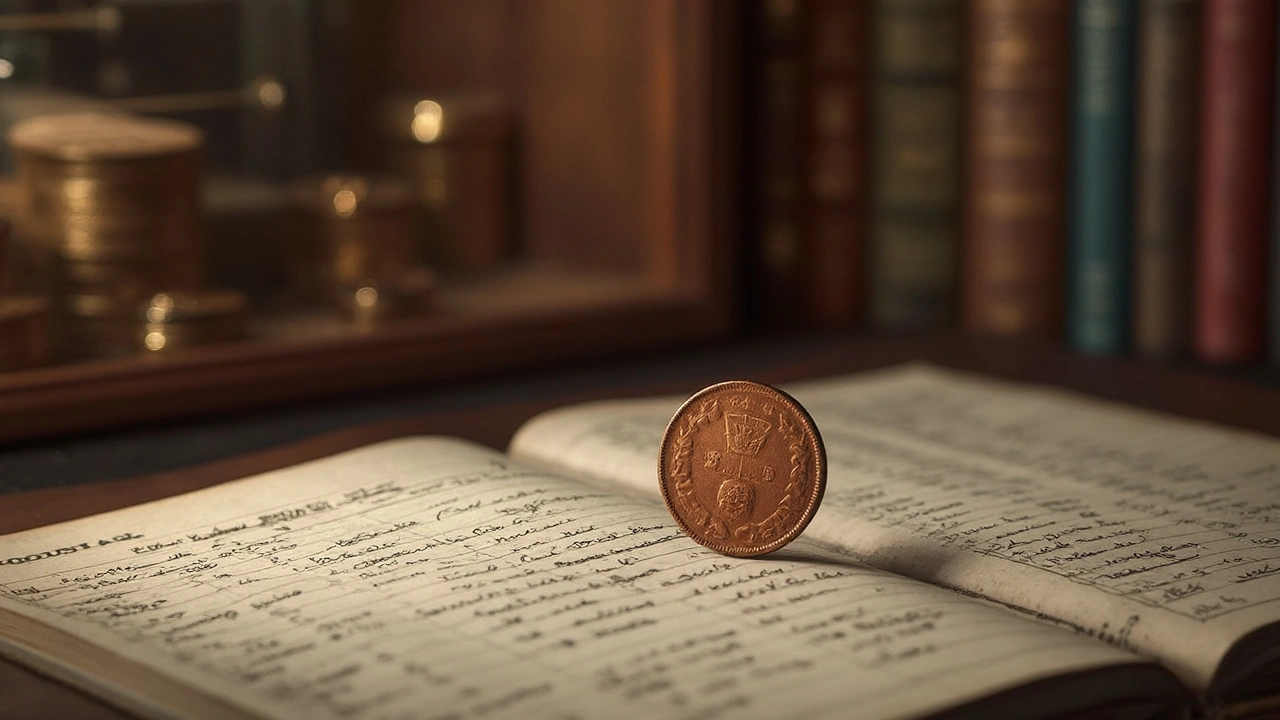
If you've ever stumbled upon a 1923 half penny, you might be wondering if it's more than just a piece of old pocket change. While not exactly rare, these coins do hold some charm for collectors. Their value is not just about the numbers but also the story and history they carry.
The first thing to know is that the condition of the coin can really make a difference in its worth. Coin collectors talk about 'grade', which means how well-preserved the coin is. A coin in mint or near-mint condition can fetch a significantly higher price than one that's been through the ringer.
But what about the history? The 1923 half penny doesn't come with any wild tales or legendary misprints, but it does represent an era on the brink of great change with the world recovering after World War I. This adds a layer of interest for those intrigued by the stories behind their collections.
- Understanding Coin Condition and Rarity
- Historical Significance of the 1923 Half Penny
- Market Demand and Current Value
- Tips for Aspiring Coin Collectors
Understanding Coin Condition and Rarity
When evaluating the value of a 1923 half penny, the condition and rarity are at the top of the list. Coin collectors and hobbyists pay close attention to 'grading' because it indicates how well the coin has been preserved over time.
The Grading System
Ever heard of terms like 'Fine', 'Very Fine', or 'Extra Fine'? These are part of a coin grading system that tells you the condition just by looking at it. For example, a coin in ‘Mint State’ is virtually untouched and takes the cake in terms of value.
"A coin’s condition is its key to unlocking value and history," says Numismatic Expert David Harper.
- Extremely Fine (EF): slight wear, but all parts visible.
- Fine (F): moderate wear, major details still discernible.
- About Good (AG): lots of wear, parts barely visible.
Why Rarity Matters
Rarity is the other piece of the puzzle. The 1923 half penny may not be as rare as other coins, but that doesn't mean it's not special. Many coins of that era were produced in smaller batches, especially during post-war economic challenges, which spikes interest among collectors.
A Peek at Values
If a 1923 half penny is in top-notch condition, you might be looking at values ranging anywhere from just a couple dollars to as much as $100 if you strike gold and find a serious buyer. Market interest fluctuates, of course.
Checking out Mint Marks
Look out for specific mint markings such as ‘K’ or other small identifiers. They can increase rarity because they reflect a different mint facility and potentially more limited production.
| Grade | Approximate Value |
|---|---|
| Mint State | $80 to $100 |
| Extremely Fine | $30 to $50 |
| Fine | $10 to $20 |
Understanding these nuances could make a visible difference in appraising any old coin you've socked away in a drawer. That little bit of extra dirt from the attic adventure or the slight tarnish from years of storage could turn out to make or break the deal!
Historical Significance of the 1923 Half Penny
The 1923 half penny is more than just a coin; it's a little slice of history. Picture this: in the early 1920s, the world was still rebuilding from World War I. Economies were recovering, societies were finding their footing, and pocket change was what kept the world moving. These coins were part of everyday life, making them tiny witnesses to history.
The Era it Represents
Back in 1923, the half penny was a common currency, used frequently in the UK. It was a time of frugality, but also of progress, with the British Empire still exerting influence worldwide. The 1923 half penny offers insight into the economic conditions of post-war Britain, reflecting a nation striving to return to normalcy.Design and Features
The coin showcases the profile of King George V, the reigning monarch from 1910 to 1936. His image is a reminder of the era's monarch-centric world, focused on tradition and royal authority. The reverse design typically featured Britannia, symbolizing the strength and unity of the British Empire.Interestingly, these coins were minted primarily at the Royal Mint in London, though some may have been produced in other locations like the Mint in Melbourne, making some variants slightly more intriguing to collectors. The minting process in those days was less about mass production and more about craftsmanship, adding to each coin's character.
From Then to Now
Today, while a 1923 half penny might not make you rich, its historical role adds to its allure. If you're holding onto one of these coins, you're essentially holding a piece of the past that doubles as a talking point about an era defined by resilience and change.
Market Demand and Current Value
Alright, let's dig into what really matters—what this 1923 half penny can fetch in today’s market. If you’re thinking big bucks, let's set some realistic expectations. This particular coin might not make you a millionaire, but it definitely has a place in many collectors’ albums.
First off, the demand for a 1923 half penny partly depends on who’s buying. Some people are just history buffs who love having a tangible piece of the past. Others are serious investors. But most buyers are, simply put, collectors looking to complete their sets.
When it comes to the actual numbers, a 1923 half penny can go for as little as a dollar if it's in pretty rough shape. However, in top condition—say, with minimal scratches and original coloring intact—it could fetch anywhere between $25 to $40. Not bad for a coin that’s nearly a century old, right?
If you’re keen on buying or selling, checking recent auctions gives a good sense of current trends and values. Typically, prices fluctuate, like with anything in demand, so keep an eye on auction sites or visit a local coin shop for the latest info.
You might also find coin shows handy. They’re great for gauging interest and prices since they gather folks who share your passion for coins. Plus, it's a great place to hear what others think a rare coin like the 1923 half penny is truly worth in today’s market.
One more thing—mint condition examples might see a rise in value over time, especially as we head further into a digital era where physical currency is becoming a rarity in itself. So, if you've got a pristine coin, it might be worth holding onto and watching how things evolve.
Tips for Aspiring Coin Collectors
Diving into coin collecting can be an exciting journey, full of history, art, and maybe even a bit of treasure. If you're eyeing that 1923 half penny or other interesting coins, here's a rundown to get you started.
Start Simple, Learn the Basics
When you're new to the coin-collecting world, it's best to start with the basics. Understand terms like 'grade' which refers to the coin's condition. The better the condition, or grade, the more valuable your coin might be. Grab a coin collecting book or check out online resources to learn more.
Inspect the Coins Carefully
Get a magnifying glass and good lighting—crucial tools for inspecting coins. Look for wear and tear, mint marks, or any unique features. This can help you decide if that coin in your hand is just a dusty old piece or a collector's gem. The right inspection can sometimes reveal a valuable feature others may have missed.
Know Where to Buy or Trade
You can find collectable coins in various places—local coin shops, online auctions, or even coin-collecting clubs in your area. Visiting a shop can give you a hands-on experience, while online platforms often offer more variety.
Join a Coin Collecting Community
Connecting with other coin enthusiasts can be quite supportive. You can gather insights, share experiences, and often find someone who's willing to trade. Being part of a group keeps you in the loop about what's trending in the coin world.
Set a Budget
It's easy to get carried away when starting a new collection, but setting a budget can keep your enthusiasm in check. Decide how much you're willing to spend each month and stick to it. This will help you avoid impulsive buys that can end up being a mistake.
Track and Protect Your Collection
As your collection grows, keep a record of your coins' details—date, condition, purchase price, etc. Using a spreadsheet can be quite handy. Storing coins properly is just as crucial. Use coin holders or albums to protect them from damage.
Get Expert Advice
If you're serious about building a valuable collection, consulting an expert can provide guidance tailored to your interests. They can offer valuable identification tips or let you know what's currently sought after, which might influence your collecting decisions.
Post A Comment